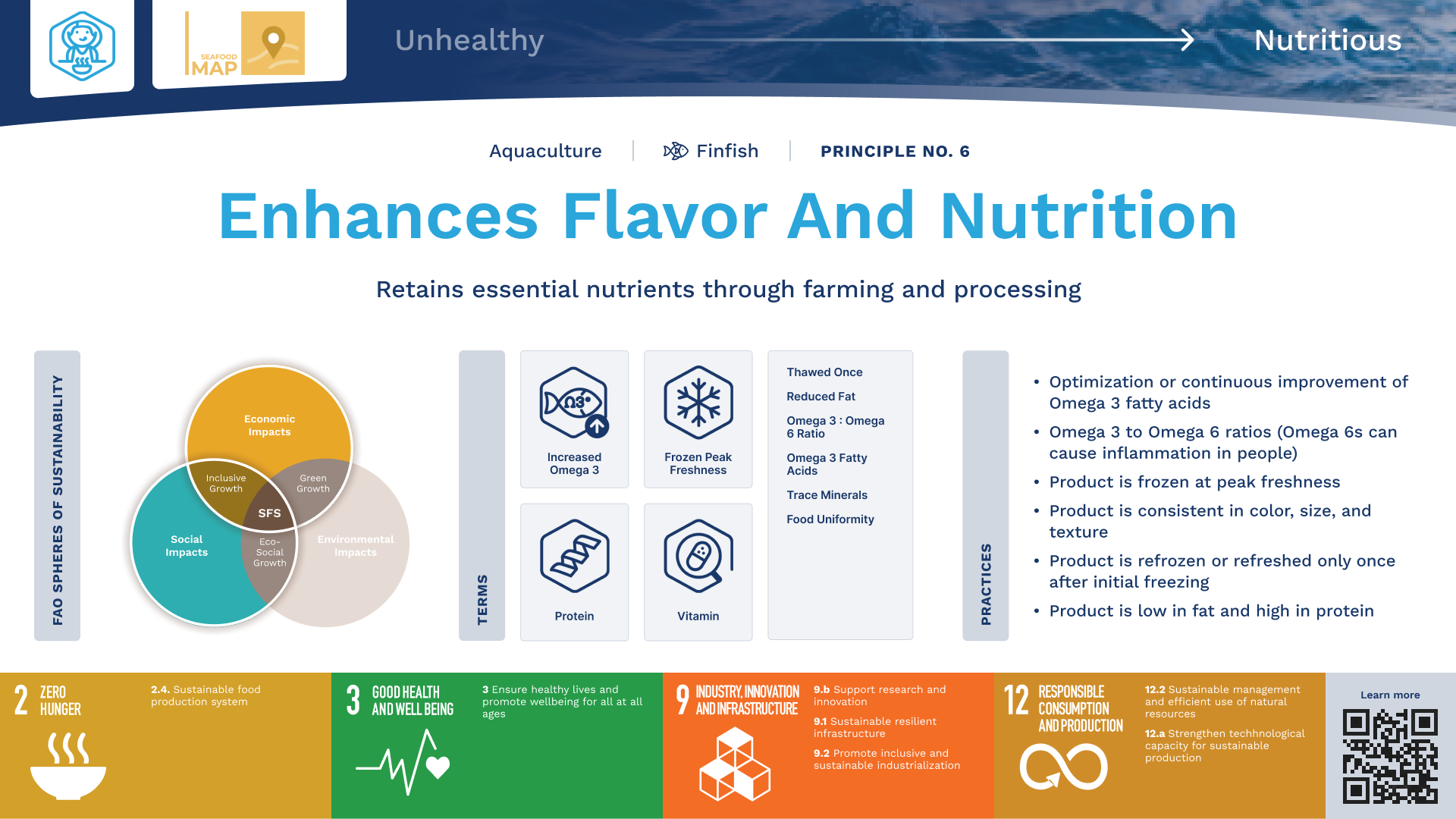Aquaculture – Principle 6 | Seafood MAP
From sugar kelp to scallops to salmon, aquatic foods are nutrient-dense and a major source of protein, trace minerals, and healthy Omega 3 fatty acids. Recent studies show that consuming aquatic foods can improve brain development and heart health and reduce the risk of cancer. With new innovations, knowledge sharing, and culinary imagination, chefs and producers are bringing a consistently healthy product to our tables in newly delicious ways.
Fed by Blue
Key Topics Explained
What are the health and nutrition benefits of farmed fish?
Just as we can farm chicken well and we can farm chicken badly, the same is true for fish and seafood. When a farm is run at the highest level, it is possible to produce a fish that is more nutritional than its wild counterparts. The key lies in the farming practices and the feed model. When this intention is set from the beginning, the health and nutritional benefits are many. For example, if the pen densities are low, the fish can get more exercise and therefore be lower in fat. The higher the densities, for example in salmon, results in a fish that has more fat per serving than a piece of pizza. If the diet is grain and soy based, the Omega 3:6 ratio is a terrible 14:1. But when the fish is well reared, the Omega 3:6 ratio can be equal to wild at 3:1. The fat content is low enough to meet the standards of organizations such as the American Heart Association that require less than 12% fat per serving. Just as the old saying goes “you are what you eat” -the feed is a key component to the overall health and nutritional levels of the fish itself. What best in class water farms have shown us, is that it IS possible to have the highest nutritional and health benefits as we have come to expect from wild fish. A farm fish CAN fulfill the promise of the health benefits we expect to get when we eat fish and seafood. It will take work to bring standards and practices to this level more broadly. Global action is required to ensure that this relatively new sector of our food system can scale to meet growing global food security challenges and human nutritional needs, while improving environmental performance.

N/A
N/A